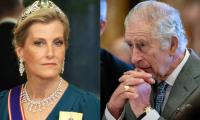After going through much upheaval in recent years, are US-China relations finally set to stabilize? Recent developments inspire hope.
The two countries have been engaged in quiet diplomacy led by US National Security Adviser Jake Sullivan and China’s top diplomat Wang Yi. They have had eight unpublicized meetings in the past fifteen months leading up to twelve hours of talks during Sullivan’s recent visit to China. Sullivan also called on President XI Jinping and had a rare meeting with China’s most senior military officer, General Zhang Youxia.
Sullivan described the talks, aimed at the “responsible management” of China-US relations, as “very productive and constructive”. Judging from the official Chinese foreign ministry reports, he appeared to have offered a list of assurances “that aligned with China’s interests”. He assured President Xi, in a first such meeting in eight years, that “the United States does not seek a new cold war”, and affirmed the “One China policy”.
Parallel to the quiet diplomacy of Sullivan-Wang Yi talks there has been an active exchange of high profile visits like those of US Secretary of Treasury Janet Yellen, US Secretary of State Blinken and US Secretary Commerce Gina Raimondo, and of their Chinese counterparts besides two meetings between Biden and XI.
What have been the basic points of contention in the relationship that these talks addressed? Here a brief background to the US-China rivalry might help to clear up some common misperceptions. Analogies are nearly always imperfect and often dangerous – especially historical ones. The US-China rivalry is not a cold war. For the US, China is a rival not an enemy like the Soviet Union was. You defeat enemies but compete with rivals.
The oft-quoted ‘Thucydides trap’ warning the world of the inevitable confrontation between the reigning superpower US and the challenger China, based on the analogy of Sparta and Athens, also falls short in explaining their rivalry. The conflict between Sparta and Athens – more than two thousand years ago with no area of cooperation, in an era when a state’s tendency to go to war was constrained neither by geopolitics, domestic politics, or economic consequences – is not even remotely comparable to the US-China rivalry of today.
These two rivalries belong to two very different worlds. There are elements of competition, rivalry, cooperation, and confrontation in the complex US-China relationship operating in an ever more interdependent world. A war between them is not inevitable. In fact, it is unthinkable.
Now what exactly is the US-China rivalry about? Initiated and driven by Washington, the rivalry is essentially two-tiered; one aimed at maintaining America’s technological and military superiority, the other at ensuring a level playing field in the economic competition.
The US is concerned about the rapid technological advance of China posing a threat to US national security. So it has banned the export of advanced technology specially semiconductors to China. It insists that restrictions are not all-embracing and has likened them to “a small yard but high fence”. Washington claims China too has put restrictions on the export of certain technologies like quantum computing and communications.
Washington accuses China of creating geopolitical tensions in regions such as the South China Sea, Taiwan, and the Philippines. America is also worried by China’s deepening economic inroads globally. The US accuses China of unfair trade practices like the use of manufacturing overcapacity in certain sectors like EVs, lithium batteries and solar panels and subsidizing their export. America says it has been forced to put restrictions to protect its industrial capacity in these areas to avoid supply chain problems like during the Covid-19 crisis.
China has an edge in geo-economics, America in geopolitics and military power. The geopolitical alliances the US has built, such as AUKUS (Australia-UK-US) and the QUAD (Australia-Japan-India-US) and the Indo-Pacific Strategy, are meant to develop enough military leverage to ensure that China does not play the US out in economic competition. The US claims its military projection including geopolitical alliances are deterrents to avoid war. Beijing calls the US alliances as offensive moves to prevent China’s rise, and blames the US for the use of Taiwan as a strategic asset in any potential military conflict with China.
In any rivalry, the rivals exaggerate the negative perceptions of each other. Both Beijing and Washington are trying to disaffect each other’s allies in the competition for influence. The US under the Trump administration highlighted the so-called debt trap without much basis and Biden followed it with this talk about the contest between “autocracies and democracies” and began this democracy summit.
China accused the US of holding a cold-war mentality and forming blocks to restrict China’s rise. The US maintains it is not against China’s economic rise, and only concerned about its own national security that China’s military rise may bring. The reality is that the US wants to maintain its global primacy, a desire that gets amplified by domestic politics.
America cannot pursue a major foreign policy initiative without hype. Once the issue is hyped up, it creates many stakeholders. And when this involves issues that raise public concerns like security and military competition then the response spirals out of control. It gets opened up to diverse influences creating many stakeholders. And the politics of the issue gets radicalized and becomes like a runaway train. This is what has happened to US-China relations. Sentiments against China have never been this negative in the US Congress, where politicians are competing to be most anti-China. The military – like all militaries, including that of China – of course always tends to be hawkish.
For the outside world, the noise of the politics and official propaganda is louder than the policy. The impression is that the US is poised to begin a war triggered by some manufactured event around Taiwan or the South China Sea. The fact is the US does not need to go to war to maintain its technological and military superiority. It is doing so by denying high technology, especially the type that can limit China’s capability for AI and military advancement. War is neither necessary nor desirable.
The US feels that China’s military rise and technological rise can also be managed by a combination of America’s own military might with that of the allies, many of whom have their own concerns about China. And they have their own strong reasons to avoid war and also at the same time foment the US-China rivalry from which they benefit geo-politically and geo-economically. So there are many guardrails against any US-China war. I know the US is known to be prone to war but keep in mind that going to war in small countries like Iraq and Afghanistan – and fail – is not the same thing as war with China.
US Ambassador to China Nicholas Burns spoke to Foreign Policy magazine after Sullivan’s visit which has brought much-needed hope for stabilization in US-China relations. He emphasized that Secretary Yellen has repeatedly said conflict between the two countries would be catastrophic. He clarified that the US is not decoupling, implying that the US-China economic relationship is vital and inevitable. On the South China Sea, he said “nobody is looking for a crisis” and encouraged direct talks between Manila and Beijing.
Not just the US but China too was accommodative, keen to avoid economic uncertainty and geopolitical pressure as it focuses on economic recovery in a stable external environment. China basically wanted to get commitments from the US which can bind the next US administration – especially a Democratic one. This would bring much-needed continuity and stability in their relations.
Differences between the two, however, will not disappear and competition will remain intense in all three fields – economic, security and technology. But they have reached a consensus that they will try to resolve them peacefully. At least the two countries have committed to stability and clarity on some fundamental issues, and this augurs well for the relationship.
Many people believe that in future, AI will play an even more significant role in their lives
In April 2024, three Chinese and one Belarusian company were sanctioned for exporting missile-enabling technology to...
Pakistan has second highest neonatal mortality in world; in education sector, country's 26 million kids are out of...
Key actors in global power politics are US, China, Russia, European Union, and emerging powers such as India and Brazil
Maulana Fazl manages to bring together factions that historically stand opposed
NASA says August 2024 set new monthly temperature record, capping Earth’s hottest summer since 1880







